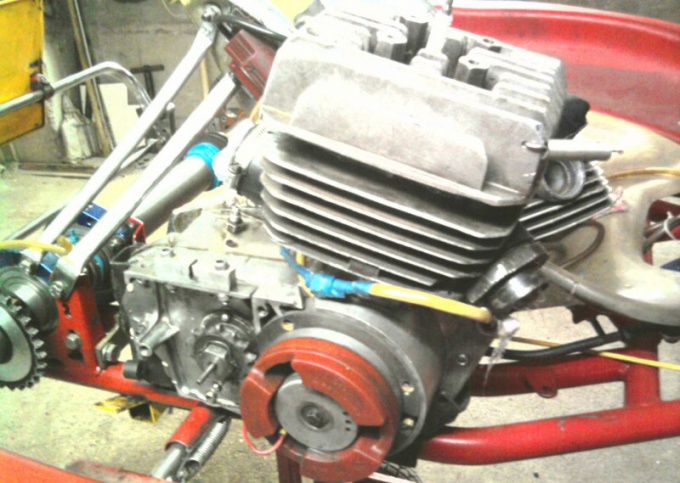Instruction
1
Determine the condition of the engine. The ideal option would be new and run-in. If the source engine is old, buy a new crankshaft, piston rings, bearings, cuffs, and tune in to painstaking work. First, completely disassemble the power unit components.
2
Get matching Windows in the sleeve with the channels in the jacket of the cylinder by the method of metal removal. Make sure that the thickness of the shirt and the neck of the crankcase remained at least 3 mm. To handle, use a drill with a set of cutters and scrapers. Achieve symmetry and high purity surface of the purge channel. If, after processing the surface of the channels will be smooth to the eye and to the touch, buff it is not necessary. Be sure to leave unchanged the height of the top of the overflow window and the vertical angle of the purge. The front edge of the overflow window make sharp, and the upper and lower edge of the upper inlet ports will opalite radius equal to the thickness of the sleeve.
3
Check that the skirt of the cylinder freely entered into assembled without gaskets Carter. If necessary, remove the excess metal in the throat of Carter. Passageways between the shirt and Carter adjust to pattern the contoured passageways shirt. The skirt of the sleeve should not block passageways. If overlap is present, remove the jumper and adjust the window in the sleeve, respectively, the window in the crankcase. Hone the intake window so as to form a smooth and stepless transition from the round cone to rectangular, with rounded to exhaust the window.
4
Outlet channel is a good line and be sure to Polish it. Podpilivaya the top and bottom edge of the window, give it an oval shape. Remove the chamfer on the outlet and top overflow Windows. Also remove the chamfer from the piston rings and the top ring matte chrome. The clearance ring lock sawed up to 0.2-0.3 mm. Surface of the cylinder bore treated with a grinding, honing or lapping. The clearance between the piston skirt and the cylinder wall bring to 0,04-0,05 mm.
5
Treat the Windows in the piston skirts so that they fit the Windows in the skirt of the sleeve. Edge on the skirt of the piston is round with a radius of 0.5 mm. Itself the piston skirts Polish. At bottom dead center, the piston must not cover the bottom edge of the top of the overflow window. To do this, either clear the flats, or protocide the piston head along the radius of 70 mm to the desired value. The bottom of the piston leave not thinner than 5 mm. the ends of the lugs of the rod mill so that their sizes did not differ more than 0.1 mm. Piston pin lighten groove beneath the cone, protecting the work surface from damage.
6
Check radial clearances in the upper and lower connecting rod bearing. They should be no more than 8 µm (top) and 12 um (bottom). When gaps more data values, replace the crankshaft for a new one. Ypressure fingers crankshaft separately from each cheek. Regular balance holes plug with aluminum, and its weight counterbalance with lead plugs inserted in the lower part of the cheeks of the crankshaft. Themselves cheeks will protocide to 100 mm in diameter, avoiding damage to the axles. The diameter of the axles themselves reduce to 17 mm using fine sandpaper.
7
Achieve a smooth pairing of the surfaces of the connecting rod, avoiding the scratches on the mates. The outer surface of the connecting rod necessarily Polish. Before assembling the crankshaft RUB with molybdenum disulphide all of the lower connecting rod bearing. The crank pin press without distortions. When this axial clearance between the lower connecting rod cap and cheek should be 1,6-1,7 mm. Carefully align and balance the crankshaft.
8
The surface of the crank chamber of the crankcase hone clean. Aluminum rings secure with epoxy glue and 3 screws M5 flat head screws. All the clearances in the crank chamber fill with epoxy resin filled with aluminum powder or with a plasticizer. After the treatment collect Carter Hermetica without a gasket. When installing the crankshaft lock it from longitudinal displacement in two washers. All screw connections of the motor assemble with anaerobic sealant.
Note
Forced engine requires gasoline with an octane rating of at least 93 and high quality oil for two-stroke engines.
